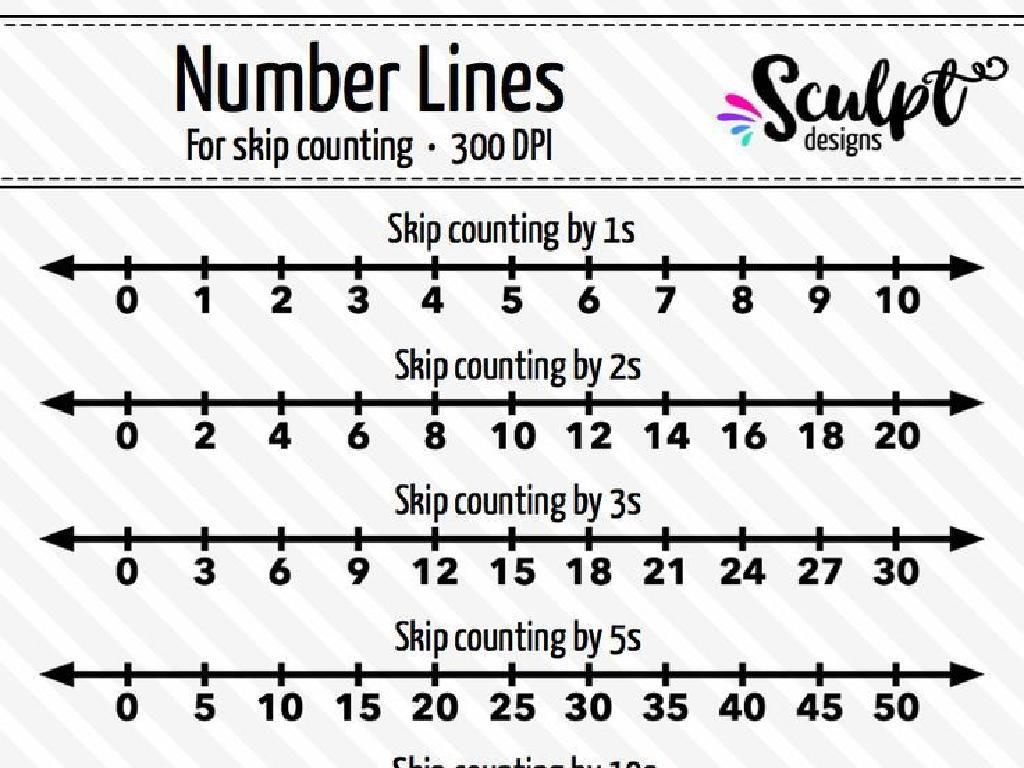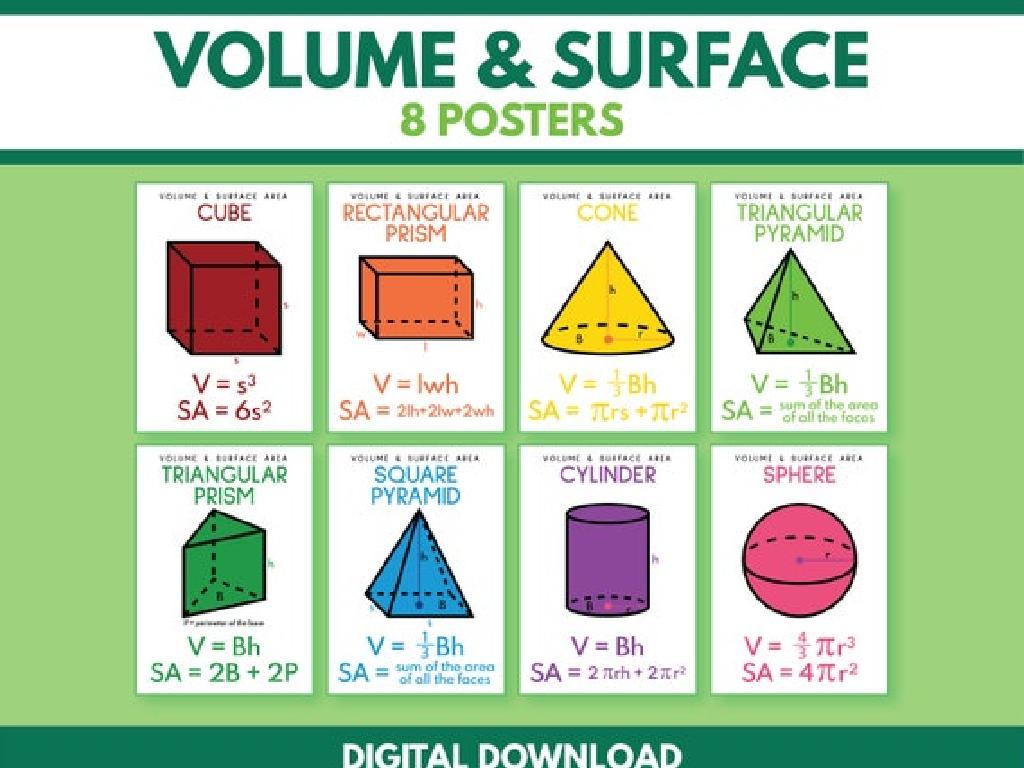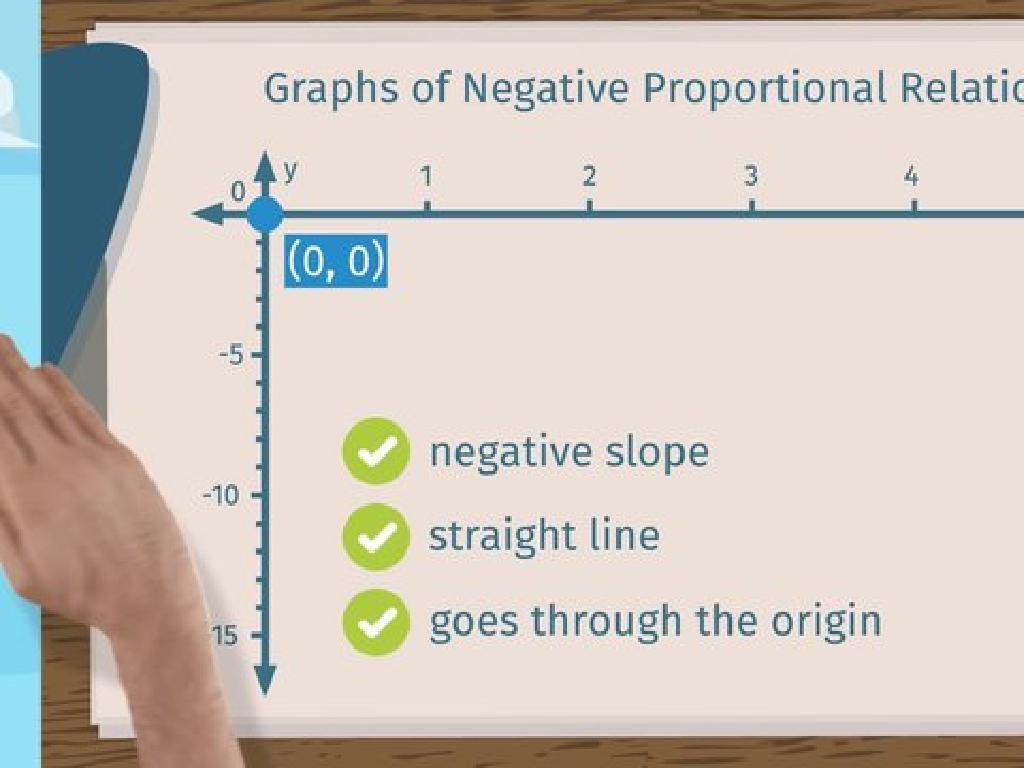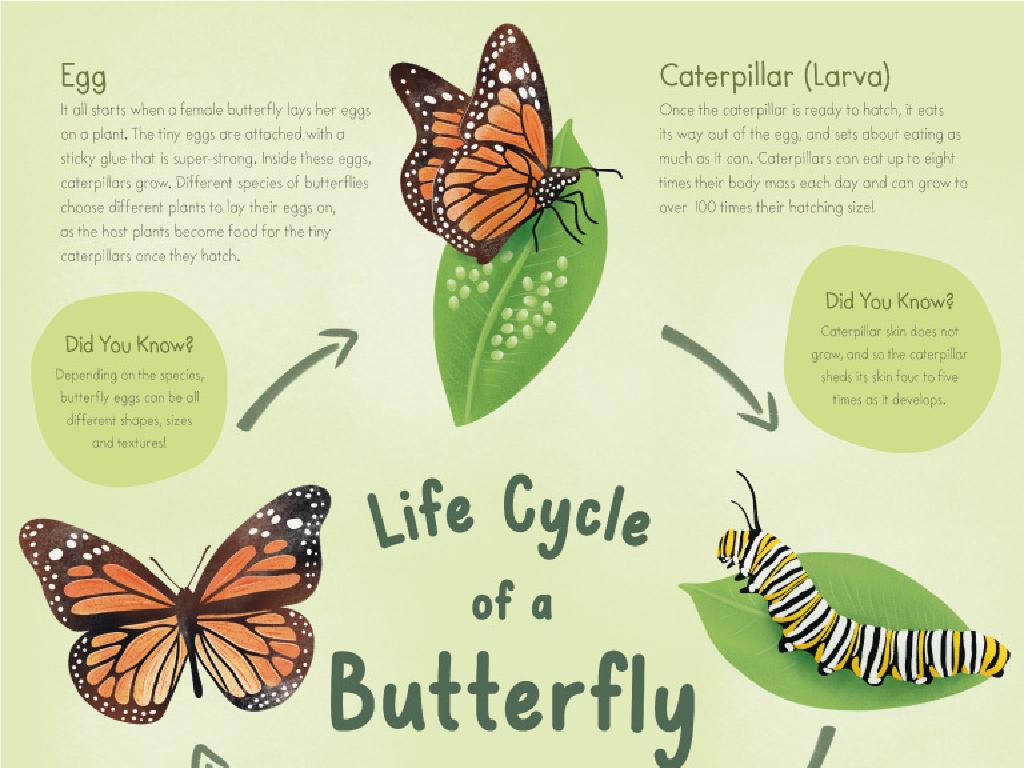Flat And Solid Shapes
Subject: Math
Grade: Pre-k
Topic: Solid Shapes
Please LOG IN to download the presentation. Access is available to registered users only.
View More Content
Welcome to Shapes: A Shape Adventure!
– Greet our little shape explorers
– Today’s adventure: Discovering shapes
– Spot shapes in everyday objects
– Look around, what shapes do you see?
– Shapes are everywhere, let’s find them!
– Maybe a circle in a clock or a square window?
|
This slide is designed to excite the children about shapes and encourage them to observe their environment with a focus on geometry. Start with a warm greeting to make the children feel comfortable. Explain that today’s lesson is about discovering and identifying shapes in the world around them. Encourage the children to look at objects in the classroom and at home to find shapes like circles, squares, triangles, and rectangles. Use common items like clocks, windows, and doors as examples. The goal is to help them recognize that shapes form the building blocks of most objects they interact with daily.
Exploring Solid Shapes
– Shapes are everywhere!
– Flat shapes: like paper drawings
– Circles, squares on flat surfaces
– Solid shapes: like your blocks
– Cubes, spheres you can touch
– Learning shapes is fun!
|
This slide introduces the concept of shapes to Pre-K students, emphasizing the difference between flat and solid shapes. Begin by pointing out that shapes are all around us in our daily lives. Explain that flat shapes are two-dimensional, like the shapes they see in drawings or pictures, which have only length and width. Then, introduce solid shapes as three-dimensional objects, like the blocks they play with, which have length, width, and height. Engage the students by showing examples of both flat and solid shapes and encourage them to touch and interact with solid shapes to better understand the concept.
Meet the Flat Shapes
– Circle, square, triangle, rectangle
– Round like a pizza, four equal sides, three corners, four corners
– Let’s trace shapes with fingers
– Use your finger to draw shapes in the air or on a friend’s back
– Find your favorite flat shape
– Is it the round circle, the even square, the pointy triangle, or the long rectangle?
– Share your favorite with the class
– Tell us why you like it the most!
|
This slide introduces Pre-K students to basic flat shapes, encouraging them to visually and physically engage with each form. By tracing shapes with their fingers, children can develop a tactile memory and understanding of each shape’s boundaries and characteristics. Asking students to choose and share their favorite shape fosters a personal connection to the material and encourages participation. During the activity, guide them to trace shapes on paper, in the air, or on textured surfaces to enhance sensory learning. Encourage them to articulate why a particular shape is their favorite, which can lead to a discussion about the shapes found in everyday objects.
Meet the Solid Shapes
– Cube: A boxy shape with 6 equal sides
– Like dice or blocks
– Sphere: A round ball shape that can roll
– Like a basketball or an orange
– Cylinder: A tube shape that can roll and slide
– Like a can of soup or a jar
– Cone: A pointy-topped shape that can slide
– Like a party hat or an ice cream cone
|
This slide introduces Pre-K students to the concept of solid shapes. Start by showing them a cube and explaining that it has 6 equal sides, just like a block they might play with. Then, move on to a sphere, demonstrating how it can roll like a ball. For the cylinder, show how it can roll like a wheel and slide like a tube. Lastly, present the cone, pointing out its pointy top and how it can slide on its side. Encourage the children to touch and interact with real-life examples of these shapes. Afterward, engage the students in a matching activity where they match flat shapes to their corresponding solid shapes to reinforce their understanding.
Shape Hunt Adventure
– Can we find solid shapes here?
– Search for a cube in the room
– Cubes are like dice or blocks
– Spot a sphere around you
– Spheres are like balls
– Find a cylinder and a cone
– Cylinders are like cans, cones like party hats
|
This slide initiates a ‘Shape Hunt’ activity where students will search their classroom for solid shapes. It’s an interactive way to help them recognize and name solid shapes in their environment. Encourage the children to look for objects that resemble a cube, sphere, cylinder, and cone. Provide examples such as a block for a cube, a ball for a sphere, a can for a cylinder, and a party hat for a cone. This activity not only makes learning fun but also helps students understand the concept of three-dimensional shapes in a tangible way. Prepare to guide them and confirm if the objects they find match the shapes they’re looking for. Celebrate all correct identifications to encourage participation.
Create with Shapes: Fun with Clay!
– Make a sphere with clay
– A round ball-like shape
– Build a cube from clay
– A boxy shape with 6 equal sides
– Roll clay into a cylinder
– A tube shape with two circle ends
– Form a cone with your clay
– A pointy-topped shape with a round bottom
|
This slide introduces a hands-on activity for Pre-K students to explore solid shapes by creating them with clay. Encourage the children to manipulate the clay into different shapes: a sphere (like a ball), a cube (like a dice), a cylinder (like a can), and a cone (like a party hat). This tactile experience helps them to understand the properties of each shape. After making the shapes, students should show and explain their creations to their peers, fostering social skills and reinforcing their understanding of the shapes. Provide guidance and supervision to ensure each child can successfully create the shapes and recognize them.
Shapes Story Time: Mr. Cube’s Adventure
– Listen to Mr. Cube’s story
– Discover shapes helping Mr. Cube
– How do circles, squares, etc., assist?
– Identify shapes in the adventure
– Point out cubes, spheres in images
– Discuss the story’s shapes
|
This slide is for a storytelling activity where students will listen to a story about a character named Mr. Cube. The story is designed to introduce children to the concept of flat and solid shapes in a fun and engaging way. As the story unfolds, pause at key moments to ask the children how different shapes like circles, squares, or triangles are helping Mr. Cube on his adventure. Encourage the children to identify and name the shapes they see in the story’s illustrations. After the story, have a discussion about the shapes found in the story and how they were used. This activity will help children recognize shapes in the context of a narrative and understand their properties in a memorable way.
Shape Dance Party
– Move like a sphere: Circle around
– Pretend to be a ball and twirl in place
– Jump up like a cube
– Hop up with arms as corners
– Roll like a cylinder
– Lay on your side and roll
– Spin like a cone
– Stand on tip-toes and turn around
|
This activity is designed to help Pre-K students recognize and understand solid shapes through physical movement. By associating shapes with actions, children can learn in a fun and engaging way. Encourage them to imagine being the shape and moving like it. For example, they can twirl like a sphere or hop like the corners of a cube. This kinesthetic approach to learning will help solidify their understanding of the properties of these shapes. Make sure to have ample space for the children to move safely and be ready to demonstrate each action. Play some lively music to enhance the activity and create a joyful learning environment.
Class Activity: Shape Sorting Fun!
– Let’s sort shapes as a group
– Flat shapes go in one box
– Shapes like circles and squares
– Solid shapes in a different box
– Shapes like cubes and spheres
– Which box has more shapes?
|
This activity is designed to help Pre-K students distinguish between flat and solid shapes through a fun sorting game. Provide a variety of flat shapes (circles, squares, rectangles) and solid shapes (cubes, spheres, cones) for the children to handle and sort. Encourage them to touch and feel the edges and faces of the solid shapes and the outlines of the flat shapes. Ask guiding questions to ensure they understand the difference. After sorting, engage the class in a discussion about which box has more shapes and why. Possible variations of the activity could include sorting by color or size, using shape cutouts for flat shapes, or finding objects in the classroom that match the shapes they’ve sorted.
Goodbye, Shape Explorers!
– Great job learning shapes today!
– Shapes are all around us
– Look at buildings, wheels, or your toys
– Keep looking for shapes everywhere
– Can you find a circle, square, or triangle at home?
– See you next time, friends!
|
This closing slide is meant to congratulate the students on their hard work during the lesson and to remind them to keep observing the world around them for shapes. Encourage the children to continue their exploration of shapes at home and everywhere they go, reinforcing the day’s learning. Remind them to look for circles, squares, triangles, and other shapes in their environment. This will help solidify their understanding of shapes in a fun and interactive way. End the lesson on a positive note, expressing excitement for the next time you’ll meet and explore more about shapes.






